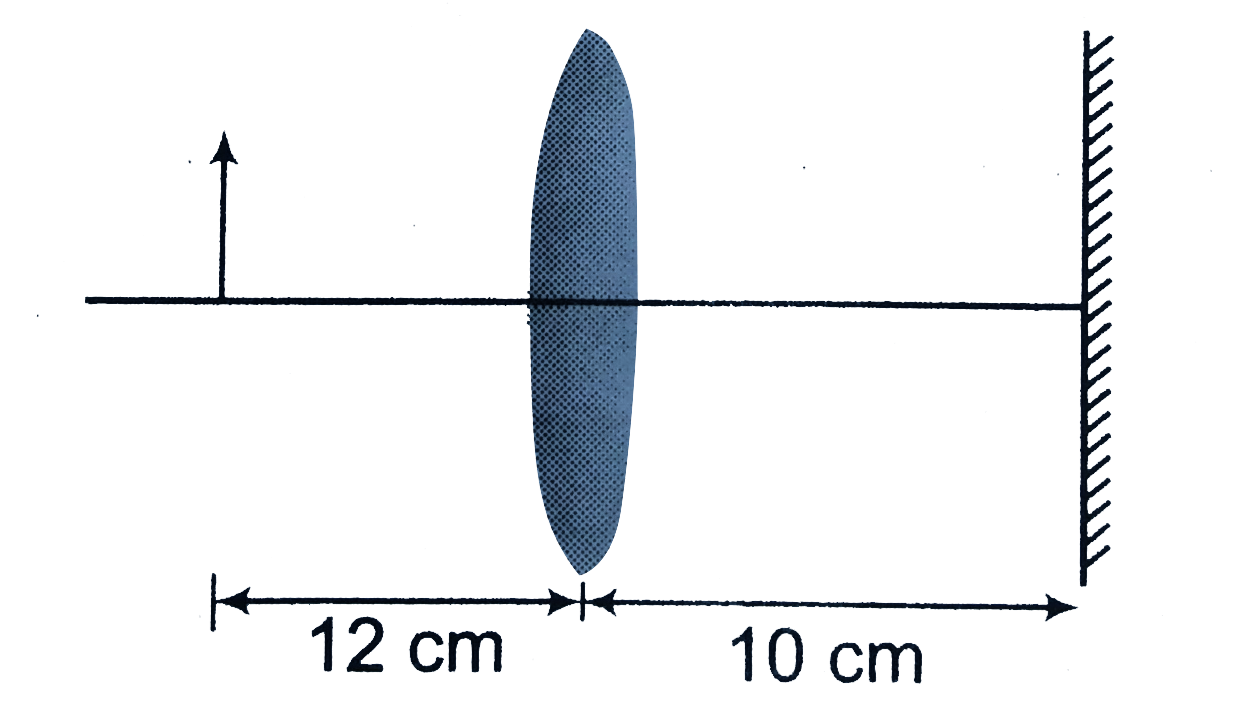The image of an object, formed by a combination of a convex lens (of focal length f) and a convex mirror (of radius of curvature R), set up as shown is observed to coincide with the object.

Redraw this diagram to mark on it the position of the centre of the mirror. Obtain the expression for R in terms of the distances, marked as a and d, and the focal lenght f, of the convex lens.
Using lens formula

Topper's Solved these Questions
- XII BOARDSBOOK - XII BOARDS PREVIOUS YEARCHAPTER - XII BOARDSEXERCISE - SECTIONS-C
13 Videos
- XII BOARDSBOOK - XII BOARDS PREVIOUS YEARCHAPTER - XII BOARDSEXERCISE - SECTIONS-D
4 Videos
- XII BOARDSBOOK - XII BOARDS PREVIOUS YEARCHAPTER - XII BOARDSEXERCISE - C.B.S.E.CLASS-XII PHYSICS (THEORY) [SET-I] (SECTION-A)
5 Videos
- SAMPLE PAPER 2019BOOK - XII BOARDS PREVIOUS YEARCHAPTER - SAMPLE PAPER 2019EXERCISE - SECTION D
6 Videos
Similar Questions
A convex mirror of radius of curvature 20 cm forms an image which is half the size of the object. Determine the position of the object from the pole of the mirror.
View SolutionAn object is placed at a long distance in front of a convex mirror of radius of curvature 30 cm. State the position of its image.
View Solution
Knowledge Check
An object is placed at 15 cm from a convex lens of focal length 10 cm. Where should another convex mirror of radius 12 cm placed such that image will coincide with object.
A18 cmB17 cmC14 cmD20 cmAn object is placed in front of a convex mirror of a radius of curvature 20 cm. Its image is formed 8 cm behind the mirror. The object distance is
A20 cmB40 cmC60 cmD80 cmThe focal length f is related to the radius of curvature r of the spherical convex mirror by
Af=+12rBf=−rCf=−12rDf=r
A convex lens of focal length 20cm is placed 10cm in front of a convex mirror or radius of curvature 15cm. Where should a point object be placed in front of the lens so that it images on to itself?
View SolutionAn object is placed at a distance of 20 cm in front of a convex mirror of radius of curvature 30 cm. Find the position and nature of the image.
View SolutionAn object is placed in front of a thin convex lens of focal length 30cmand a plane mirror is placed15cmbehind the lens.If the final image of the object coincides with the object the distance of the object from the lens is
View SolutionAn object, a convex lens of focal length 20cm and a plane mirror are arranged as shown in the figure. How far behind the mirror is the second image formed?

View SolutionAn object is placed at a large distance in front of a convex mirror of radius of curvature 40 cm . What is the distance of image from the mirror ?
View Solution
